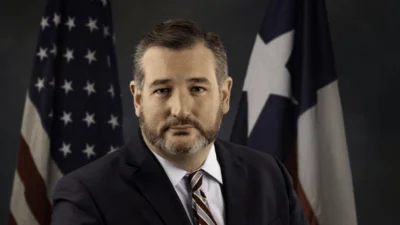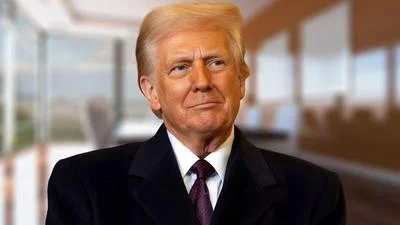The Congressional Record is a unique source of public documentation. It started in 1873, documenting nearly all the major and minor policies being discussed and debated.
“PERU FREE TRADE AGREEMENT” mentioning the U.S. Dept of Labor was published in the Senate section on pages S14779-S14780 on Dec. 5, 2007.
The publication is reproduced in full below:
PERU FREE TRADE AGREEMENT
Mr. HARKIN. Mr. President, I am a longtime supporter of policies designed to open foreign markets to our Nation's exports through trade agreements. I have fought to break down barriers that many other countries have erected to block our exports and to create unfair advantages. The fact is that mutually beneficial trade agreements serve to improve farm income and create jobs here at home, and American consumers receive benefits as well, including lower prices and a greater variety of goods.
I supported the fast track procedure in the 1988 Trade Act. I voted for the North American Free Trade Agreement and the Uruguay Round GATT Agreement. However, trade agreements are not only about commercial transactions. Trade agreements also have major environmental impacts, and they have major implications for the legal rights and working conditions of laborers. All of these factors must be carefully considered in determining whether to support a given trade agreement.
Certainly, there are modest positives in this Peru Free Trade Agreement. The American Farm Bureau Federation has estimated that the agreement would generate a net increase in U.S. agricultural exports of more than $700 million annually once the agreement is fully implemented in 2025. I note, however, that, in today's dollars, that would represent only roughly one-half of 1 percent of current U.S. agricultural exports.
In addition, this agreement would level the playing field for the United States vis-a-vis other major agricultural exporters in South America. Both Brazil and Argentina enjoy preferential access into Peru's markets because of Peru's associate membership in Mercosur, and this FTA would make it easier for our products to compete with exports from Brazil and Argentina. However, I have always considered these country-by-country trade deals to be far less than ideal. It would be far better to negotiate a successful global trade agreement under the auspices of the World Trade Organization.
Despite these modest benefits, I believe that, on balance, the Peru Free Trade Agreement falls short. I am particularly concerned about the agreement's deficiencies with regard to fighting child labor.
As many of our colleagues know, I have been working to reduce abusive and exploitative child labor around the world for a decade and a half. I first introduced a bill on this issue in 1992. Over the years, I have worked hard to improve the labor provisions in various trade measures, concentrating particularly on abusive and exploitative child labor. I believe strongly that trade agreements should support and reinforce existing international child-labor standards, not undercut them. On this criterion, the Peru FTA falls short.
According to the best estimates by the International Labor Organization, ILO, there are at least 218 million child laborers between the ages of 5 and 17 in today's global economy. Of these 218 million child laborers, more than 100 million have never seen the inside of a classroom. An estimated 126 million children are working under the most hazardous circumstances in mines, in fishing operations and on plantations. These children are being robbed of their childhoods. Many are being denied an education. They are deprived of any hope for a brighter future. In the years ahead, they will grow up illiterate and exploited, and this will create a wellspring of future social conflict and strife, and even terrorism.
We have made progress in recent years by increasing funds for programs to rehabilitate child laborers through our contribution to the ILO's International Program for the Elimination of Child Labor. In 2000, I successfully amended the Trade and Development Act with a provision directing that no trade benefits under the Generalized System of Preferences, GSP, will be granted to any country that does not live up to its commitments to eliminate the worst forms of child labor. I required that the President submit a yearly report to Congress on the steps being taken by each GSP beneficiary country to carry out its commitments to end abusive and exploitative child labor.
I want to explain clearly to my colleagues what I mean when I refer to abusive and exploitative child labor. I am not talking about children who work part time after school or on weekends. There is nothing necessarily wrong with that. What I am referring to is the definition set out by ILO Convention 182 on the Worst Forms of Child Labor. This is not just a Western or a developed-world standard; it is a global standard that has been ratified by 163 countries. It was ratified by Peru in 1999. The United States was the third country in the world to ratify this convention.
It is true that we have made some modest progress in including labor protections in this Peru Free Trade Agreement. But we all know that labor protections in trade agreements mean nothing in the absence of political will to enforce them. I am also concerned that, on the very same day that the deal to include new labor provisions in the Peru FTA was announced, the president of the U.S. Chamber of Commerce said, ``We are encouraged by assurances that the labor provisions cannot be read to require compliance with ILO Conventions.'' Clearly, this statement sends a powerful message that the labor provisions in the Peru FTA should be ignored.
Under the Peru deal, the only party that can seek enforcement of labor violations in Peru is the U.S. administration. There is no mechanism for an outside party, such as a nongovernmental organization, to bring a complaint, as exists under the GSP. This would actually take us, and the world, a step backward when it comes to protecting children. That is right. This free-trade agreement with Peru, which replaces GSP provisions in governing trade between our two countries, will take us backward with respect to combating abusive and exploitative child labor.
Under the current U.S. GSP provisions, the President now must report to Congress annually regarding Peru's child labor practices. Under GSP, if Peru is not meeting the obligations that it undertook as a signatory to the ILO Convention 182, if it is not acting to eliminate the worst forms of child labor, then trade sanctions are imposed immediately to require enforcement in Peru of internationally recognized standards. This protects children. It also ensures that our workers will not be subjected to unfair competition from abusive and exploitative labor abroad. Unfortunately, under the Peru Free Trade Agreement, trade sanctions are not automatic.
I remind our colleagues that we voted 96 to 0 to include those protections, which I offered to GSP. It was a Harkin-Helms amendment, and it received unanimous, bipartisan support. None of us wanted to have those child labor protections undercut by our trade negotiators in an agreement with Peru or any other country but that is exactly what has happened. Now, because of fast-track rules which don't allow us to amend this legislation, we won't even be able to vote to restore the GSP protections in this agreement. If we vote for this trade agreement, we are voting to remove the protections that all of us who were here in 2000 voted to put in place.
On the matter of child labor, this Peru Free Trade Agreement takes us in the wrong direction. Abusive and exploitative child labor is wrong as a matter of principle. And it is also wrong as a practical matter. Our workers and our small businesses should not have to compete with abused and exploited child laborers abroad.
I am sorry to say that this is not an academic or rhetorical issue in the case of labor practices in Peru. Peru is far from the worst Government, even in our hemisphere, when it comes to meeting its international obligations to protect children from abusive and exploitative labor. I don't mean to single out Peru. But there is broad agreement among international observers--including our own Department of Labor, the Department of State, UNICEF and the International Labor Organization--that the problem of abusive child labor persists in that country. As many as 1.9 million Peruvian children between the ages of 6 and 17 are working rather than attending schools as they should. There are an estimated 150,000 child laborers in the capital city of Lima alone. The Government of Peru may be seeking to reduce the problem, as it should, but we should not be weakening our sole existing trade mechanism that allows us to monitor its progress. That is not the way forward for free and fair trade. And it is certainly not the way to lift up the Peruvian economy. Abusive child labor perpetuates the cycle of poverty across generations. No country has achieved broad-based economic prosperity on the backs of working and exploited children.
Mr. President, I appreciate that improvements were made to this agreement thanks to my Democratic colleagues in the House. But this remains a flawed agreement, one that we are not allowed to correct through amendments. I was eager to support an agreement promoting freer trade with Peru, but I cannot support a flawed agreement that takes a step backward from current law.
____________________








